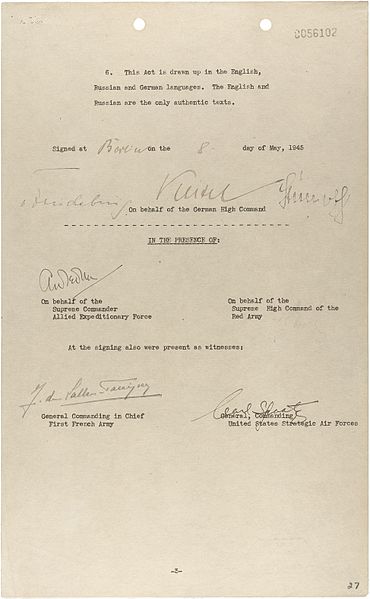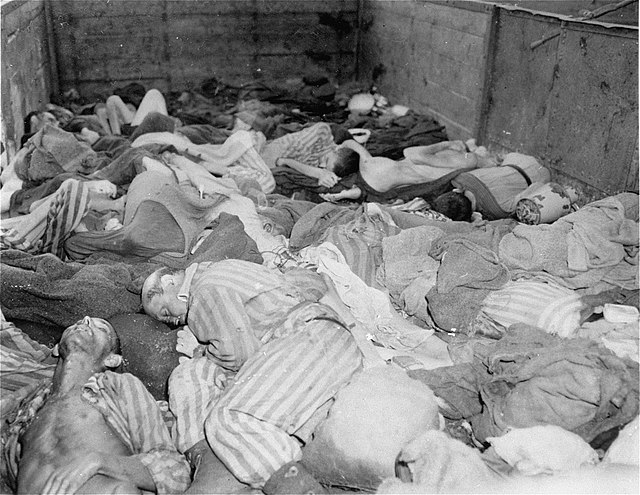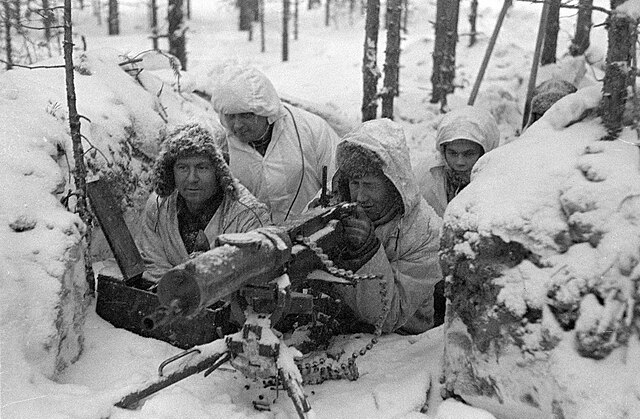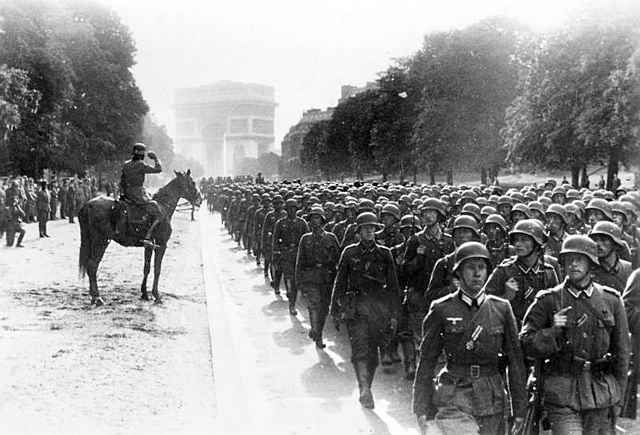End of World War II in Europe
The final battles of the European theatre of World War II continued after the definitive surrender of Nazi Germany to the Allies, signed by Field marshal Wilhelm Keitel on 8 May 1945 in Karlshorst, Berlin. After German leader Adolf Hitler's suicide and handing over of power to grand admiral Karl Dönitz on the last day of April 1945, Soviet troops conquered Berlin and accepted surrender of the Dönitz-led government. The last battles were fought on the Eastern Front which ended in the total surrender of all of Nazi Germany’s remaining armed forces such as in the Courland Pocket in western Latvia from Army Group Courland in the Baltics surrendering on 10 May 1945 and in Czechoslovakia during the Prague offensive on 11 May 1945.
Third and last page of the instrument of unconditional surrender signed in Berlin on 8 May 1945
The Dachau death train consisted of nearly forty railcars containing the bodies of between 2,000 and 3,000 prisoners who were evacuated from Buchenwald on 7 April 1945.
The front page of The Montreal Daily Star announcing the German surrender
Keitel signs surrender terms, 8 May 1945 in Berlin.
European theatre of World War II
The European theatre of World War II was one of the two main theatres of combat during World War II. It saw heavy fighting across Europe for almost six years, starting with Germany's invasion of Poland on 1 September 1939 and ending with the Western Allies conquering most of Western Europe, the Soviet Union conquering most of Eastern Europe including the German capital Berlin, and Germany's unconditional surrender on 8 May 1945 although fighting continued elsewhere in Europe until 25 May. On 5 June 1945, the Berlin Declaration proclaiming the unconditional surrender of Germany to the four victorious powers was signed. The Allied powers fought the Axis powers on two major fronts, but there were other fronts varying in scale from the Italian campaign, to the Polish Campaign, as well as in a strategic bombing offensive and in the adjoining Mediterranean and Middle East theatre.

From left to right, top to bottom German Stuka dive bombers on the Eastern Front, 1943 German soldiers take position near a Sturmgeschütz III on the Eastern Front, 1942 American soldiers during the Italian campaign, 1943 Stuka flying over Stalingrad, 1942 Soviet soldier raising a flag over the Reichstag after the Battle of Berlin, 1945 Destruction in Dresden after Allied air raids, 1945
Finnish soldiers during the Winter War
German troops in Paris after the Fall of France
RAF Supermarine Spitfires, used extensively alongside the Hawker Hurricance during the Battle of Britain








